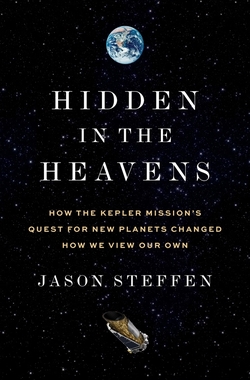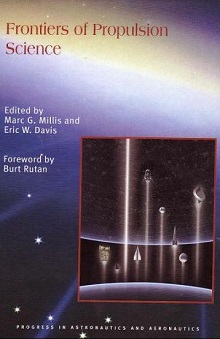My prediction that we're going to find evidence for exo-life around another star before we find it in our own Solar System is being challenged from several directions. Alex Tolley recently looked at the Venus Life Finder mission, a low-cost and near-term way to examine the clouds of the nearest planet for evidence of biology (see Venus Life Finder: Scooping Big Science). Now we learn of advances in a ten-year old project at the University of Hawai'i at Manoa, where Anupam Misra and team have been working on remote sensing instruments to detect minute biomarkers. This one looks made to order for Mars, but it also by extension speaks to future rovers on a variety of worlds. Image: This artist's impression shows how Mars may have looked about four billion years ago. The young planet Mars would have had enough water to cover its entire surface in a liquid layer about 140 m deep, but it is more likely that the liquid would have pooled to form an ocean occupying almost half of Mars's...
Of Algorithms and Hidden Planets
It’s hard to imagine what the field of exoplanet discovery will look like in a hundred years. Just as difficult as it is to imagine what might happen if we do get to a ‘singularity’ in machine intelligence beyond which we humans can’t venture. Will the study of other stellar systems become largely a matter of computers analyzing data acquired by AI, with human operators standing by only in case of equipment failure? Or will the human eye for pattern and detail so evident in many current citizen science projects always be needed to help us piece together what the machines find? I wonder this when I read about the effort going into teasing new data out of older observations, as we saw recently in VASCO, a project to study old astronomical photographic plates looking for possible technosignatures. And I suspect we’ll always need human/machine collaboration to draw maximum knowledge out of our data. Today let’s look at how useful software tools are illuminating what we’ve already learned...
White Dwarfs: Planetary System Rebirth?
Let's catch up with white dwarfs, a kind of star that may spawn planetary systems of its own. For I've just found another case of archival data being put to good use in the form of a study of a white dwarf system called G238-44. Here, the data come from the Hubble instrument (specifically, its Cosmic Origins Spectrograph and Space Telescope Imaging Spectrograph), the Far Ultraviolet Spectroscopic Explorer (FUSE), and the Keck Observatory's High Resolution Echelle Spectrometer (HIRES) in Hawaii. What astronomers presented at a recent AAS conference is a picture of a system severely disrupted by its star's transition to white dwarf status. Moreover, this is a star in the process of accretion with a distinct twist from earlier such discoveries. For the white dwarf - the remnant left behind after the system's star went through its red giant phase - is actively drawing rocky and metallic material as well as ices from the debris of the disrupted system. These are the stuff of planet...
‘Lurker’ Probes & Disappearing Stars
We've looked before at the growing interest in exploring near-Earth space for evidence of probes from other civilizations that may have been sent in the distant past to monitor and report home on the progression of life in our Solar System. If extraterrestrial civilizations exist, the idea that one of them might have explored our system and left behind what Jim Benford calls a 'lurker' probe is sensible enough. We send probes to places we want to learn more about, and we would certainly have probes around the nearest stars if we had the means. Breakthrough Starshot is an example of such interest. A century from now, human probes to other stars may be commonplace. Various places to search for lurker probes have been suggested, from Lagrange points - where objects placed there tend to stay put, with minimal need for fuel consumption - to barely studied Earth co-orbitals to the surface of the Moon. But what about Earth orbit? Surveillance of the Earth could involve probes in long-term...
Comet Interceptor Could Snag an Interstellar Object
It pleases me to learn that Dutch astronomer Jan Oort was among the select group of people who have seen Halley's Comet twice. At the age of 10, he saw it with his father on the shore at Noordwijk, Netherlands. In 1986, he saw it again from an aircraft. What a fine experience that would have been for a man who brought so much to the study of comets, including the idea that the Solar System is surrounded by a massive cloud of such objects in orbits far beyond those of the outer planets. Image: Dutch astronomer Jan Oort, a pioneer in the study of radio astronomy and a major figure in mid-20th Century science. Credit: Wikimedia Commons CC BY-SA 3.0. Halley's Comet is a short-period object, roughly defined as a comet with an orbit of 200 years or less, and thus not a member of the Oort Cloud. But let's linger on it for just a moment. The most famous person associated with two appearances of Halley's Comet is Mark Twain, who was born in 1835 with the comet in the sky, and who sensed that...
Europa: Catching Up with the Clipper
I get an eerie feeling when I look at spacecraft before they launch (not that I get many opportunities to do that, at least in person). But seeing the Spirit and Opportunity rovers on the ground at JPL just before their shipment to Florida was an experience that has stayed with me, as I pondered how something built by human hands would soon be exploring another world. I suppose the people who do these things at the Johns Hopkins Applied Physics Laboratory and the Jet Propulsion Laboratory itself get used to the feeling. For me, though, the old-fashioned 'sense of wonder' kicks in long and hard, as it did when Europa Clipper arrived recently at JPL. Not that the spacecraft is by any means complete, but its main body has been delivered to the Pasadena site, where it will see final assembly and testing over a two-year period. Here I fall back on the specs to note that this is the largest NASA spacecraft ever designed for exploration of another planet. It's about the size of an SUV when...
Solar Sailing: The Beauties of Diffraction
Knowing of Grover Swartzlander’s pioneering work on diffractive solar sails, I was not surprised to learn that Amber Dubill, who now takes the idea into a Phase III study for NIAC, worked under Swartzlander at the Rochester Institute of Technology. The Diffractive Solar Sailing project involves an infusion of $2 million over the next two years, with Dubill (JHU/APL) heading up a team that includes experts in traditional solar sailing as well as optics and metamaterials. A potential mission to place sails into a polar orbit around the Sun is one possible outcome. [Addendum: The original article stated that the Phase III award was for $3 million. The correct amount is $2 million, as changed above]. But let’s fall back to that phrase ‘traditional solar sailing,’ which made me wince even as I wrote it. Solar sailing relies on the fact that while solar photons have no mass, they do impart momentum, enough to nudge a sail with a force that over time results in useful acceleration. Among...
Venus Life Finder: Scooping Big Science
I've maintained for years that the first discovery of life beyond Earth, assuming we make one, will be in an extrasolar planetary system, through close and eventually unambiguous analysis of an exoplanet's atmosphere. But Alex Tolley has other thoughts. In the essay below, he looks at a privately funded plan to send multiple probes into the clouds of Venus in search of organisms that can survive the dire conditions there. And while missions this close to home don't usually occupy us because of Centauri Dreams' deep space focus, Venus is emerging as a prominent exception, given recent findings about anomalous chemistry in its atmosphere. Are the clouds of Venus concealing an ecosystem this close to home? by Alex Tolley Introduction The discovery of phosphine (PH3), an almost unambiguous biosignature on Earth, in the clouds of Venus in 2021 increased interest in reinvestigating the planet's clouds for life, a scientific goal that had been on hiatus since the last atmospheric entry and...

